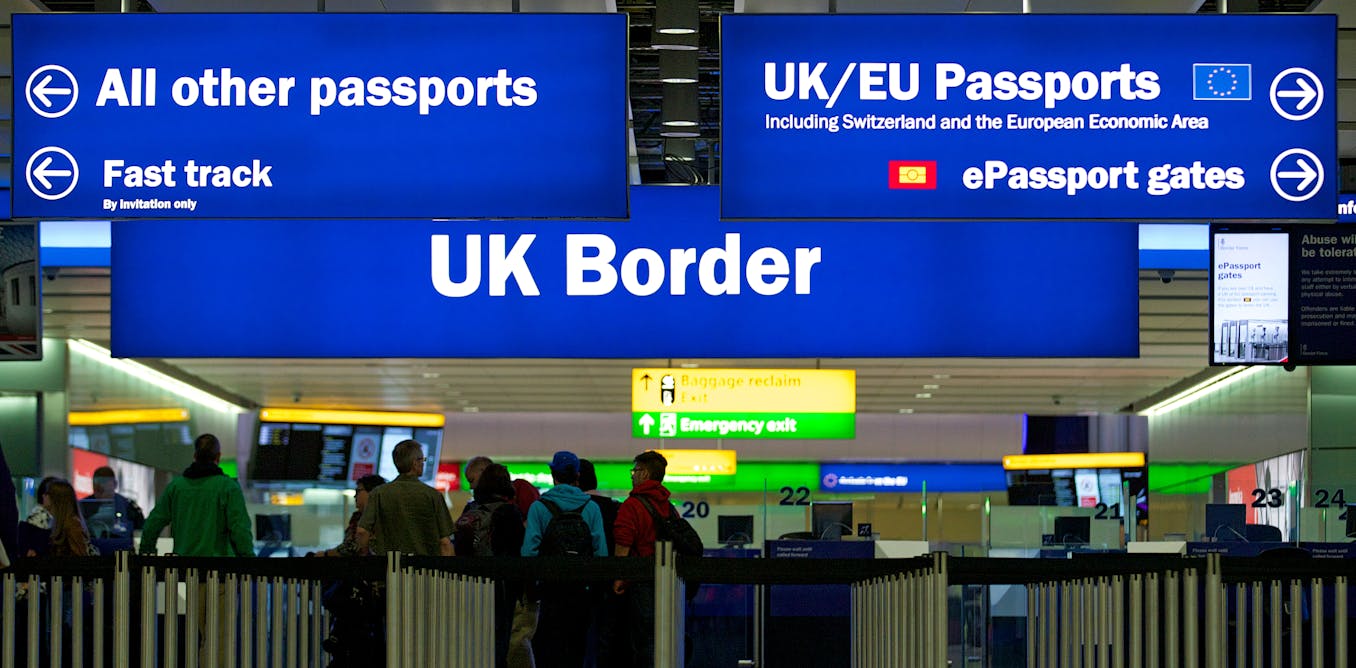
- Select a language for the TTS:
- UK English Female
- UK English Male
- US English Female
- US English Male
- Australian Female
- Australian Male
- Language selected: (auto detect) - EN
Play all audios:
There is an increasing focus on migration in the build up to the EU referendum. It is arguably the key issue which Leave advocates feel confident of having majority support on. And headlines
that proclaim migration to be nearing a “record high” fuel the Brexit campaign’s calls to quit the EU and end the commitment to free movement of labour. As the last release of migration
statistics before the referendum, the latest quarterly figures from the UK’s Office for National Statistics assume heightened significance. While they largely confirm what we already know,
it is worth looking at some of the detail. Estimated net migration remains historically high. The latest figures show a slight rise, although not by a statistically significant amount. The
figures released are not a comprehensive count of everyone who has come and gone, but an estimate based principally on a sample survey conducted at points of entry and exit. They are
therefore subject to sampling variation and the magnitude of the recorded change is within the range statistically compatible with no actual change from the previous quarter. There is
nothing new therefore to get excited about in the headline figure. The long-term annual net migration figure of 333,000 is the difference between a gross inflow of 630,000 people and an
outflow of 297,000 people. So people are arriving at roughly twice the rate at which they are leaving. What change the figures do record is a consequence of a fall in emigration (though
still statistically insignificant) rather than of a rise in immigration. This illustrates a point that rises in net migration can be as easily a result of fewer individuals leaving as of
more coming. Is insufficient emigration what worries those upset by migration numbers? It seems unlikely. A CLOSER LOOK AT THE NUMBERS The Brexit debate is focused more on migration from
within the EU than immigration from outside and the ONS figures are also illuminating on this. Net inflows of EU citizens (other than the UK) and non-EU citizens are very similar: 184,000
and 188,000 respectively. So are the gross inflows, 270,000 and 277,000. Whether measured net or gross, EU immigration therefore accounts for about half of the total. The statistics show
that work is the most common reason for immigration, accounting for 308,000 arrivals, 58% of whom had a definite job to go to and the rest arriving with the intention of looking for work.
Many more of these were EU citizens (61%) than were from outside the EU (24%). The number is currently rising. By contrast, the numbers arriving for study fell from 191,000 to 167,000 and
these were mainly from outside the EU (72%) rather than from inside (23%). The number of those coming to accompany or join others, for example for marriage or family reunion, were smaller
than either labour or student migration at 73,000. The number of asylum applications, despite its prominence in much discussion, was lower than any of these, although rising – about 42,000
in the year to March 2016, with about 12,000 applications granted over the same period. AN ILL-JUDGED AIM The headline figure of more than 300,000 net migration is a continuing embarrassment
to the government because of its aspiration to keep this below 100,000. Obviously, they are nowhere near to achieving that, but to many there is something seriously ill-judged in the aim
itself. A net immigration target is a target for the difference between two large numbers – immigration and emigration – only one of which the government has any ability to control.
Furthermore, its influence even over immigration is diminished by the EU commitment to free movement of labour, particularly when half of the gross inflow is EU citizens, largely coming to
the UK to work. Efforts to reduce immigration are therefore drawn towards the relatively controllable categories such as student migration, family migration or high-skilled immigration from
outside the EU – even though these are not the sorts of immigration that are most unpopular. BAD ECONOMICS A case is therefore made for Brexit because it could liberate the UK from having to
honour the free movement of European labour. At least two arguments suggest this might be a bad idea. First, the economic advantages of participating in free movement of labour would be
lost. There are good reasons to think that free movement is good for productivity, allowing firms to recruit widely for skills. It’s also good for public finances, bringing in young migrants
keen to work whose contributions in taxes outweigh any costs imposed on the public exchequer. And it’s good for economic dynamism, allowing fresh ideas to spread and be adopted. Evidently
there are costs in adjusting to high flows of people, but concerns that immigration is damaging either to labour market prospects of British-born workers or to public finances are not borne
out by evidence. But second, the only plausible way to restrict freedom of movement after Brexit would be to choose the most economically damaging of the options for post-Brexit trading
agreements and access to the single market. The weight of evidence has been gaining increasing acceptance among economists that the economic losses from Brexit would depend critically on
trade arrangements negotiated in the aftermath. While the most plausible estimates suggest that the range of options go from bad to very bad, the worst options in terms of long-term
permanent losses in national income and harm to public finances are the only ones compatible with long-term restrictions on free movement. Alarmingly high costs would therefore be incurred
for no compelling economic advantage. The economic case is therefore clear – immigration has not been bad for the UK. But even voters who think it has should be wary of believing that Brexit
would allow Britain to withdraw from freedom of movement without other high economic costs.






:max_bytes(150000):strip_icc():focal(717x385:719x387)/Kate-Middleton-earrings-111824-NA-tout-18cee316d7b1427cbab536bee4236217.jpg)
:max_bytes(150000):strip_icc():focal(636x0:638x2)/90-day-fiance-2647f84e12694a639aa71f0076b702fc.jpg)